THE COST OF RACING: TOYOTA 86 SERIES
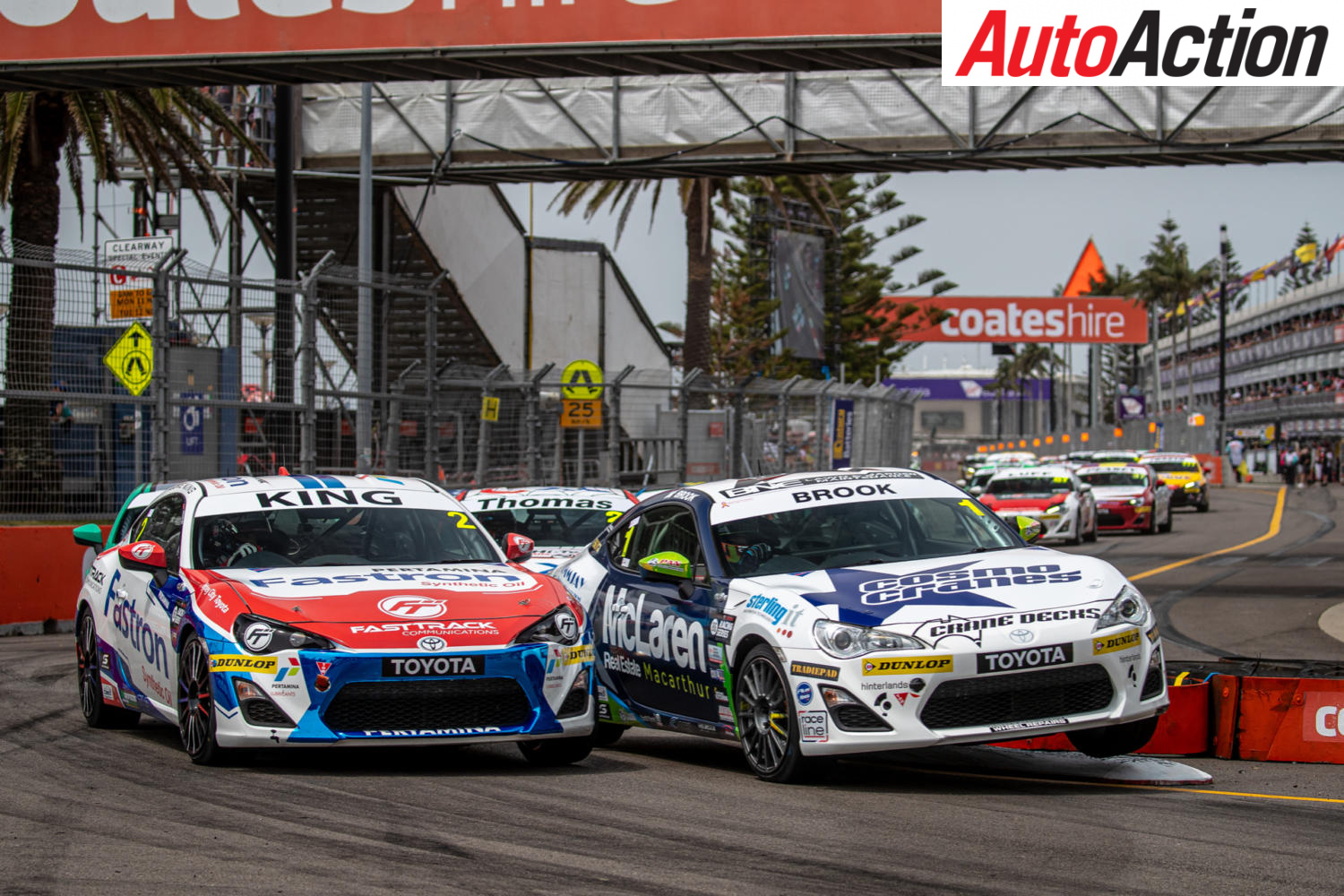
When the Toyota 86 Race Series launched on the Australian motor sport scene in 2016, it immediately became a star of the Supercars’ program.
With major backing from Toyota it has proven to be a big hit, but is it truly affordable? Heath McAlpine investigates.
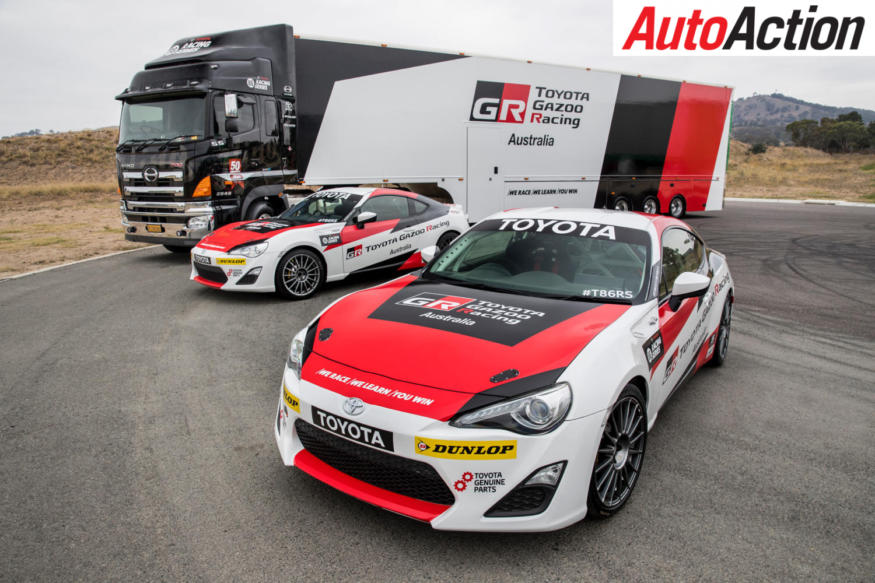
This Cost of Racing article features the first category that runs solely on the Supercars support program.
The Toyota Gazoo Racing 86 Australia Series (yes, quite a mouthful) is easily the most populous class that races regularly on Australia’s leading motor sport program.
Entries for this development class, which attracts competitors of all ages and walks of life, is regularly more than 40-cars, which is remarkable and demonstrates how strong the formula is.
Indeed, Toyota has already renewed its official support of the class until the end of 2022.
Based around a Neal Bates Motorsport kit, the starting point for a racing Toyota 86 can be everything from a statutory write-off to a brand-new 86 from the showroom.
The one constant is the package of parts required to turn it from road to race application.
Drivers and team owners alike are fans of the highly controlled nature of the class, which has thus far launched the careers of Will Brown, Cameron Hill, Jaylyn Robotham, Aaron Cameron, Liam McAdam, Broc Feeney and Jimmy Vernon, just to name a few.
Finding a suitable 86 depends on what pathway the prospective competitor wants to go down.
Statutory write offs can be bought for as little as $10,000 while a brand-new car from a dealership will cost $32,000 (GT spec approximately).
If building a car isn’t the go, there are already a heap of second-hand race 86s on the market, ranging in cost from $35,000-$60,000 for a series winning entry.
Next, a roll cage is needed, a series specification item that can be assembled by companies including Bond Roll Bars, which can also provide a kit for competitors who want to assemble it themselves.
Because it is a comprehensive design, the cage can be fully installed for $7000 or the kit is supplied for $4000.
What follows next in the build is the category kit, which was developed by Neal Bates Motorsport and is what makes the 86 into a race car.
Three-time Australian Rally Champion Bates, together with suspension gurus Josh and Murray Coote and others covering different competition experience, completed extensive pre-testing of the kit, which includes tyres.
“We did two-days with myself, an 86 driver, Josh and Murray Coote, and a range of other drivers of different levels. We combined that with the tyre test where we chose the package as well,” Neal Bates explained of the kit development.
Testing discovered a variety of modifications that were needed to be made to make the 86 suitable for racing.
“Essentially, we got an 86 and went to the track with it. People will tell you they don’t need brakes, but they do,” Bates elaborated.
“Some people go to a track day and say ‘These things are fun with standard brakes’ or they’ll run a production car and say they didn’t have brake issues, but when you’ve got 35 cars nose-to-tail, temperatures start to go up.
“The GT and the GTS come with different brakes, and it was cheaper to put a brake package on them than upgrade a GT to a GTS standard brake package.”
Oil surge also proved a problem, so NBM baffled the tank and a MoTeC ECU was standardised, purely to stop competitors changing the map.

The current Toyota 86 tyre package is an interesting subject.
Australia has always used road-going Dunlops but this has been updated recently to the Dunlop Direzza Z3. Across the pond in New Zealand, the organisers went a different direction, but soon followed Australia’s lead.
“The tyre package is a road-tyre, but a performance type,” Bates explained.
“We didn’t want to go the way of New Zealand where they started off with slicks, then went to Formula Rs, and are now using a Nitto Road-Track tyre, which is a very similar tyre to us.
“The problem is, the cars handle well, but are not overly powerful, so you don’t want to over-tyre them and (they) become like slot cars where anyone can hold them flat.”
Craigsted Race Engines is well known in the motor sport industry as a supplier to many categories ranging from Supercars to V8 Utes and also Toyota 86s.
For this year more responsibility will be put on the company because it has been contracted to determine legality of 86 series engines.
Bates emphasised that the engine must remain stock and when competitors complete engine servicing or a rebuild, work must be done exactly as it is set out in the Toyota workshop manual.
“You have to work out of the workshop manual. On a rebuild of an engine you’re allowed to take 0.1mm off the cylinder head and 0.1mm off the block,” Bates said.
“As for servicing, you have to keep standard valve angles, standard rings, standard bearings, everything is as per the Toyota manual.
Support at the race track is provided by Bates where, in a one stop 86 shop, everything that could be needed is contained in the NBM service truck attending each event.
“The competitors have a 40 per cent discount on parts, so we sell them at the same price at the track or a tiny bit more, just to cover freight.”
So, to the kit. What do you get for your $27,100 (including GST)?
AP supply the brake package, which includes a set of calipers, rotors, hats, brake lines and pads, costing $6090.91.
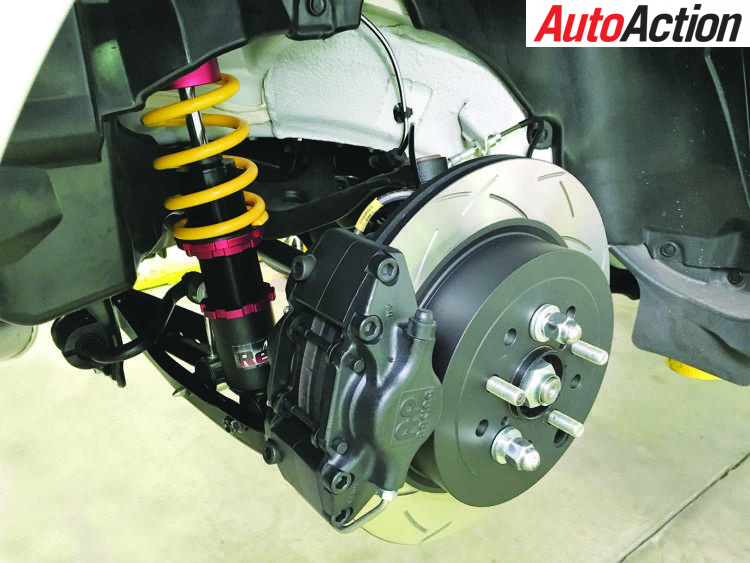
Suspension is handled by MCA and at $2727.27 buys the competitor a full set of plug and play dampers, springs and link front anti-roll bar. Rear lower control arms and adjustors are $418.18, rear adjustable tow links at $272.73.
Category modifications to the electronics include the previously mentioned MoTeC engine management system, including mapping and dash at a cost of $3636.36, a lambda sensor at $654.55, while a C125 race logging kit adds another $3090.91 and a loom costs $63.64
Kit items related to the engine and fuel system are limited to the control category exhaust, at $2363.64, an oil cooler kit for $1454.55, sump baffle $268.18, throttle stop $72.73 and fuel coupling kit at $154.55.
The clutch kit comes from Exedy containing a clutch plate, pressure plate and flywheel, at the cost of $818.18.
Items that need to be fitted to the exterior include a boot spoiler at $409.09, primary tow straps for $286.36 and four OZ racing rims, which complete the package at $1636.36.
With this kit, how does the 86 running costs weigh up?
Bates told Auto Action, “The cars are incredibly cheap to run if you don’t flat change or don’t crash”, an opinion shared by former series winner Tim Brook.
A driver coach by day, Brook transitioned from Formula Vee to Toyota 86 and emerged as a front-runner from the beginning at Winton.
He went on to challenge in each season, winning the title in 2018, before a chaotic round at Newcastle last year meant he finished third.
“Probably just opportunity and affordability,” Brook explained about his decision to join the then-new class. “I feel it is achievable as far as expenses go to have a decent crack, you’re on a national scale, you’ve got good up and coming guys, older drivers, but you’re chasing the circus around to super cool tracks that you only get access to by supporting the Supercars.
“Other Supercars support categories cost an arm and a leg, while 86s fills a big hole there to give access to a wide range of people, hence why we get so many numbers.”
The basis of Brook’s challenger was actually his every day drive, which he drove to the title in 2018.
“I don’t know if many have gone down that path, but it wasn’t really my idea to do that, especially in the beginning when I first bought the car,” Brook told AUTO ACTION.
“It fitted, it worked, it couldn’t have been a better donor car, I’d owned it since new so I knew its history and that it wasn’t going to give me any dramas mechanically or whatnot. It never had a hit and I always looked after it.”
He was cautious in his car selection and avoided purchasing a statutory write off.
“I’ve seen guys get cheap cars and have had nothing but dramas with them,” Brook said. “If I had my time again it cost me more than ideally, you’d want it to cost less to do, but in two years apart from me hitting the fence the car hasn’t had a drama.
“I’ve seen guys that have got a stat write off with water damage and had electrical dramas for its entire life. For me, I spent more money, but in the long run it’s been worth it for sure.”
Brook stripped his Toyota 86 and took it to Bond Roll Bars, where a cage was fitted for $7000, then when returned the NBM kit was installed. Following the original 86 Race Series concept car built by Bates, Brook bought the exact same Sabelt seat, belt and steering wheel set-up for approximately $2000, fire extinguisher is a $60 component worth having.
A radio is a requirement for the category, with a driver-manager connection and another for team personnel to track race control. Brook approximates this set-up to cost $2000. A GoPro is also a must for category adjudication, at a cost of $400.
Moving onto the engine, it is standard apart from the, MoTeC ECU, oil cooler, oil sump baffle and the exhaust system and the standard engine will last a long time.
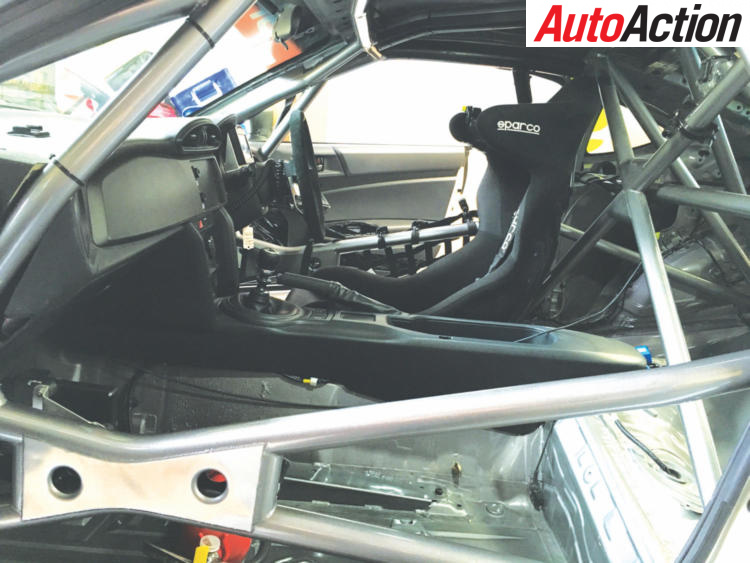
Starting with a new car, a race engine could last three seasons. The engines are reliable, generally lasting for more than two seasons, and some have kept going strong for four years.
Brook purchased a ‘crate’ motor from Neal Bates at a cost of $7000, but previously bought a similar unit at a wreckers for $3500, which won him the title in 2018.
Outside of that, the kit covers most other items.
Servicing is done by Brook himself, replenishing the lubricants before each meeting, including using the control oil. Brook advised that keeping a watch on the diff and gearbox oils is a priority to avoid encountering problems in those areas.
Front brake pads are changed each round, front rotors last two or three rounds, while the rear pads and rotors can be left in the car all season.
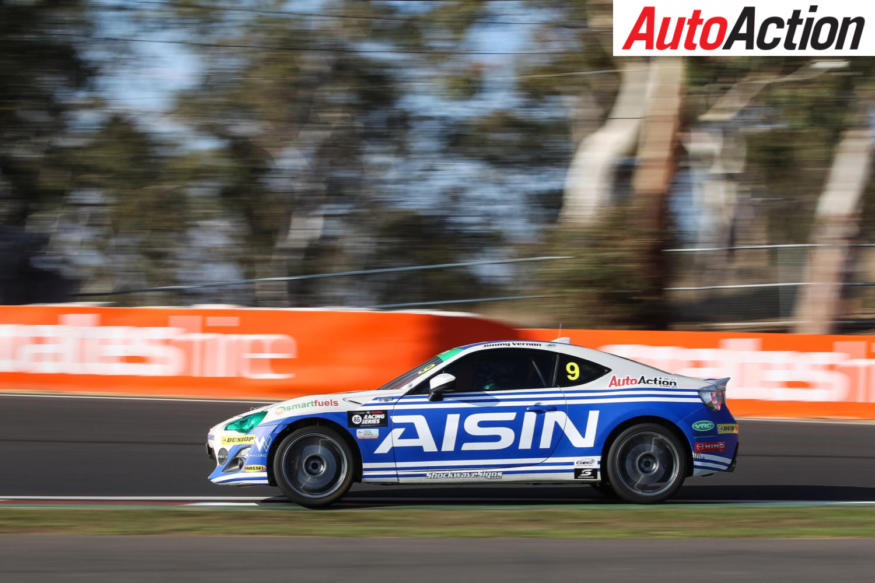
Set-up for events is relatively straight forward if damage hasn’t incurred.
“If you’re not crashing and having big dramas, it doesn’t take long,” said Brook. “You just need to throw it onto the set-up patch once in between rounds to make sure nothing has moved or repairs.”
Expect to outlay $30-$35,000 on top of the purchase price of the car to prepare a Toyota 86 to racing specifications.
For a season of racing, Brook believes budgeting for $10,000 per round is a realistic number. Of course, each round won’t cost $10,000, but it averages it out that way with trips to Townsville and Bathurst carrying additional costs such as accommodation or vehicle freight costing $3000-$3500 for these long-haul events.
The standard series costs are an event Entry Fee of $1500 per round, which can be lumped into one sum of $7500 at the beginning of the season.
Prize money is certainly lucrative for the series, with the title winner taking home a $50,000 purse, with $30,000 for second and $15,000 for third, and it pays all the way to eighth spot. Other giveaways and prizes are also on offer at the end of the year.
A set of new tyres must be bought at a cost of $1170. This set must be used from the start of qualifying until the last race, with older sets used through practice.
But what if the trials and tribulations of car construction isn’t your go?
Well, there are a variety of professional teams that offer race packages, one of which is the reigning series winner, the Sieders Race Team.
“Our arrive and drive, it’s all inclusive, is $17,500 plus GST per round,” team owner Luke Sieders said.
“That’s basically rock up with your helmet and go racing.
This package includes the vast resources the team has at its disposal, including engineers, mechanics and the experience of 86 series racing that the team has been built up.
“That’s your engineering team, the mechanics, the big thing that is beneficial is the access to the resources that we have at Sieders Racing,” Sieders continued.
“We have an expansive spares package so that we don’t really have to rely on the Bates truck because I have invested heavily in stocking our own supply, so we’re self-sufficient. We’ve also got a series winning pedigree where we can resource data and driver coaching facilities.”
Accommodation for the driver only and on-circuit catering are included in that price. Damage, signwriting and accommodation for family members aren’t, but Sieders can aid in two of those areas.
We complete repairs in-house to save costs for our customers,” Sieders said “We have our own car-aligning facility and our own panel shop, as part of a subsidiary business of the family. The fact that we have it all in-house does save a lot of money come repair time.
“We’ve got an affiliation with Creative Signworx, it is our signwriter. As part of being involved with us, he will subsidise all signwriting for Sieders Race Team drivers.”

Outside of on-track support, the Sieders package is extensive, featuring driver and physical training as well.
“We’ve linked heavily with Driver Solutions which help us manage the driver development and coaching,” said Sieders.
“We also have a link with Reaction Fitness headed by Leigh Stamation, based in Melbourne, but he comes to all of our Sydney driver training nights and test days, coaching all of our drivers on fitness, sports psychology, mental preparation and all the necessary areas it takes to be a competitive race driver these days.
“That’s all part of our package, it’s extensive and at the highest level. The Toyota 86 Race Series is quite competitive, if you can tick off a few one percenters here or there that other people aren’t doing, than that’s where your competitive advantage comes from.
“The biggest competitive advantage comes from the drivers themselves, especially in this series. If you can get the best out of the driver, the cars are all but the same to a degree, so that’s the biggest thing to maximise.”
A driver who wants to guest-drive for one or two rounds doesn’t fit the Sieders Race Team plan.
“I only lock people in who do the whole season,” Sieders explained. “It’s a category that you need to commit to for the whole series or don’t bother at all, because it’s that competitive. It’s only a five-round series anyway.”
Sieders Race Team not only fields its own entries but also prepares and maintains 86s for customers, with the program explained here included.
Whether it be joining a team such as Sieders Race Team, building an 86 or buying one on the used market for racing, the Toyota Gazoo Racing 86 Series Australia still remains relatively accessible even five seasons after its debut.
The avenues might be varied for a competitor on how to enter the series, but it provides a unique opportunity to race at high class venues and events, such as Bathurst or Newcastle, at a relatively inexpensive price.
Add to that the developmental benefits a category such as this provides and it’s no wonder the class remains extremely popular with competitors and spectators alike.
COST OF RACING

ENTRY FEES – $1500
TYRES – Dunlop Direzza Z3 $1170 a new set at each round
CAR PURCHASE
$10,000 statutory write-off + $30-$35,000 build cost
$35,000-$60,000 used market
NEAL BATES MOTORSPORT KIT
$27,100, including GST
COMPONENTS
AP brake package – $6090.91
MCA suspension package – $2727.27
MoTeC engine management – $3636.36
Exhaust system – $2363.64
Oil cooler – $1454.55
Throttle stop – $72.73
Rear trunk spoiler – $409.09
Baffle engine sump – $268.18
MoTeC C125 race logging kit with 86 config and bracket – $3090.91
Loom, OBDII – $63.64
Exedy clutch kit – $818.18
Secondary tow straps – $218.18
Four OZ wheels – $1636.36
Lambda sensor kit – $654.55
Control arms, lower rear camber adjuster – $418.18
Fuel coupling kit – $154.55
Rear adjustable tow link kit – $272.73
Primary tow straps – $286.36
Components required to race
Approved racing seat – $800+
Racing harness – $450+
Steering wheel – $200+
Window net kit – $125
Bonnet Pins – $60
Radio – $2000-$3000
Engine breather kit – $100-$300
Battery isolation kit – $60
FIA Spec rollcage padding – $200
Cameras for driving standards – $400
Replacement ‘sealed’ control engine – $7000


